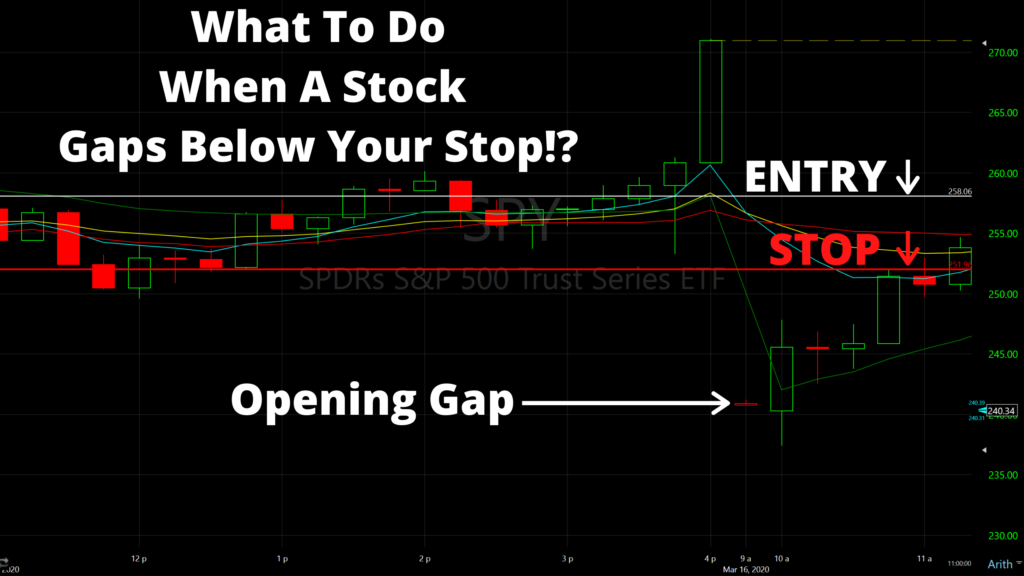Boxing great Mike Tyson famously said “everybody has a plan until they get punched in the mouth”. For traders, the dreaded gap down after you’ve entered a position is the equivalent to getting punched in the face.
This is the spot where trading plans go out the window and poor decision making sets in. A trader might freeze up and not know what to do, compounding losses, or do the opposite and start overtrading.
For example, let’s say you enter XYZ stock at $100 with a stop at $95 at 1% risk. The next morning an analyst downgrades the stock. It opens at $85 and we are not looking at a loss of 3%.
Often traders panic and just sell out at this time. This is a mistake because this is often the worst time to exit. That’s because big gap downs are often the result of panic selling and soon a reflex bounce is in play.
In today’s video, I’ll show you how to trade when your stop has been blow up using the “stop gap down” strategy. Here is what you will learn:
- How to handle gap downs using our recent Goldman Sacs trade (we got out 1o points higher than the open)
- How to understand your own risk levels
- How to analyze supports
- How not to panic sell
- How to improve on your risk
- How to set a “max pain” loss.
Stop Gap Down Strategy https://t.co/8Kxe9cSPvh
— Paul J. Singh (@PaulJSingh) March 16, 2020
Stop Gap Down Strategyp https://t.co/8Kxe9cSPvh
— Paul J. Singh (@PaulJSingh) March 16, 2020


